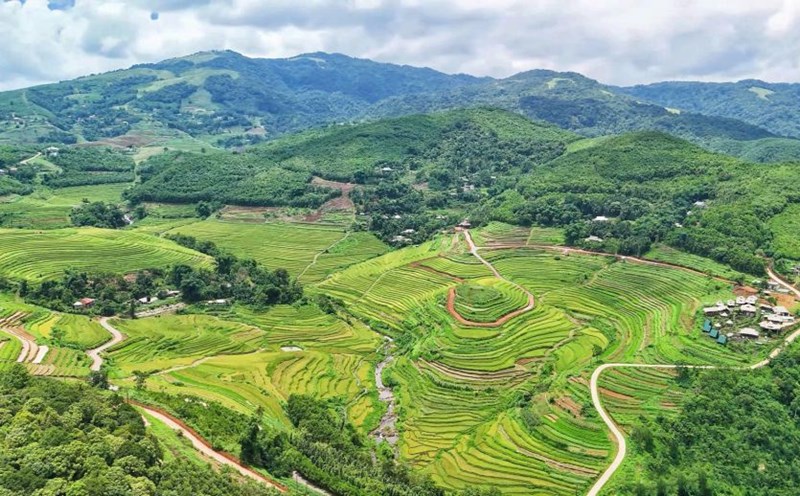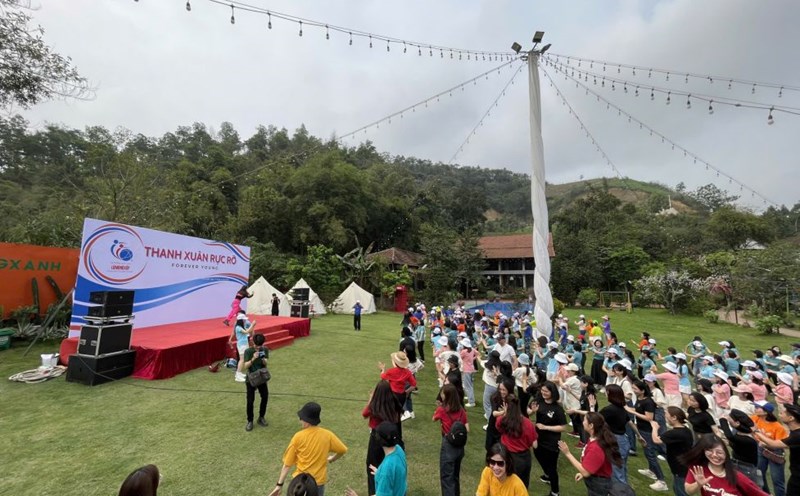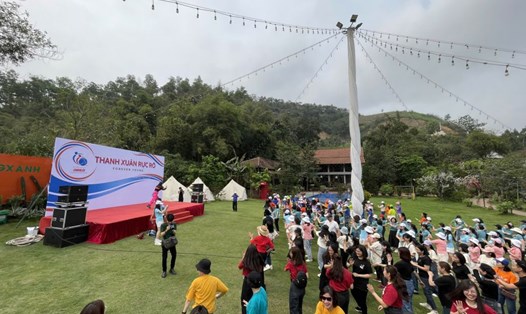From the idea of personal collection, Mr. Binh has restored living space, items, architecture and opened a class to teach Muong culture to the younger generation.
Muong Village in the middle of the street
Born on the Da River, having held a position in the tourism industry, at the age when many people choose to rest, Mr. Binh has begun a new journey. That is to rebuild "Muong village" in the middle of the city. Land is the land of ancestors, money is the whole life savings. At the beginning, he only knew one thing - if he did not do it immediately, many values would be lost.
In 2014, after many years of searching for artifacts, dismantling and restoring stilt houses, the museum officially opened. This is one of the first private museums in the Northwest region, and the 24th private museum in the country.
The museum consists of 6 ancient stilt houses brought from many villages, of which 4 houses recreate the ancient Muong social structure: Lang House (clan), U House (upper- Upper- Upper-School), Nooc House ( Ordinary People) and Nooc Trai House (Upper- Upper-School Class). The remaining two houses are a thematic exhibition area for musical instruments, costumes, festivals, beliefs... Each house is a story, clearly recreating the difference in status, living and worship space of each class.
Every item, the smoky stove, the altar in the middle of Lang's house, the wine cross next to the old wooden pillar were restored in the original, carrying the breath of Muong life, as if just moved from an ancient village.
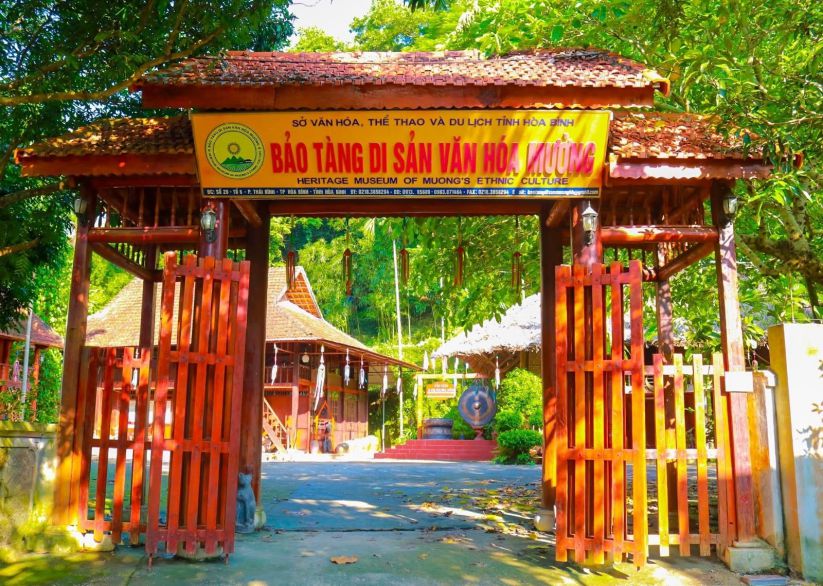
As a "treasure trove" that knows how to tell stories, the museum currently preserves more than 6,000 original artifacts, dating from prehistoric to modern times, classified and arranged according to the theme: Farming tools, fishing tools, musical instruments, weaving, costumes, festivals, beliefs... The difference is the approachable display method: Each artifact has an explanation, origin, many dishes are also with the name of the donor, as a gratitude to the community.
A Heger II bronze drum here is not only an antique, but also evokes the echo of an ancient Muong society, with its own organization, ceremony, and position. The national costume, the cloud basket, or the Doi calendar made from old age... all open up vivid slices of the material and spiritual life of the Muong people.
The collection of more than 100 ancient gongs and gongs, with a diameter of up to 70cm, is both for display and use in performances, Mo ceremonies or gong classes right at the museum. The sound of gongs resounding in the space of the hills and mountains makes visitors feel like they are reliving an ancient Muong festival.
Ms. Nong Le Quyen, a tourist from Cao Bang, shared: Coming here, I feel like I am living in a real Muong village. The sound of gongs, the smell of kitchen smoke, the stories Mr. Binh told... moved me and made me feel that Muong culture was so close and lively".
Preserving and spreading Muong culture
Right at the museum, Mr. Binh opened a gong class for students, Muong people far from home and international visitors. Everyone can sit down, learn how to play, feel and understand the meaning of each gong beat, each costume. From these classes, many cultural "seeds" have been sown: Some have become performing artisans, some continue to collect artifacts, some have returned to the village to open Muong folk song classes for children.
Not only welcoming guests on the spot, he also brought Muong culture far and wide. In 2015, he and his colleagues brought the Khuong Thuong Festival and the epic excerpt "De dat, de nuoc" to Bangkok. In early 2024, when many people were still gathering for Tet, he and his family brought hundreds of artifacts to the Cu Chi site, then went to Bai Dinh to perform Muong culture in the middle of the festival season. Each trip is a time to "transfer memories", to let the Muong gongs resound among strange lands.
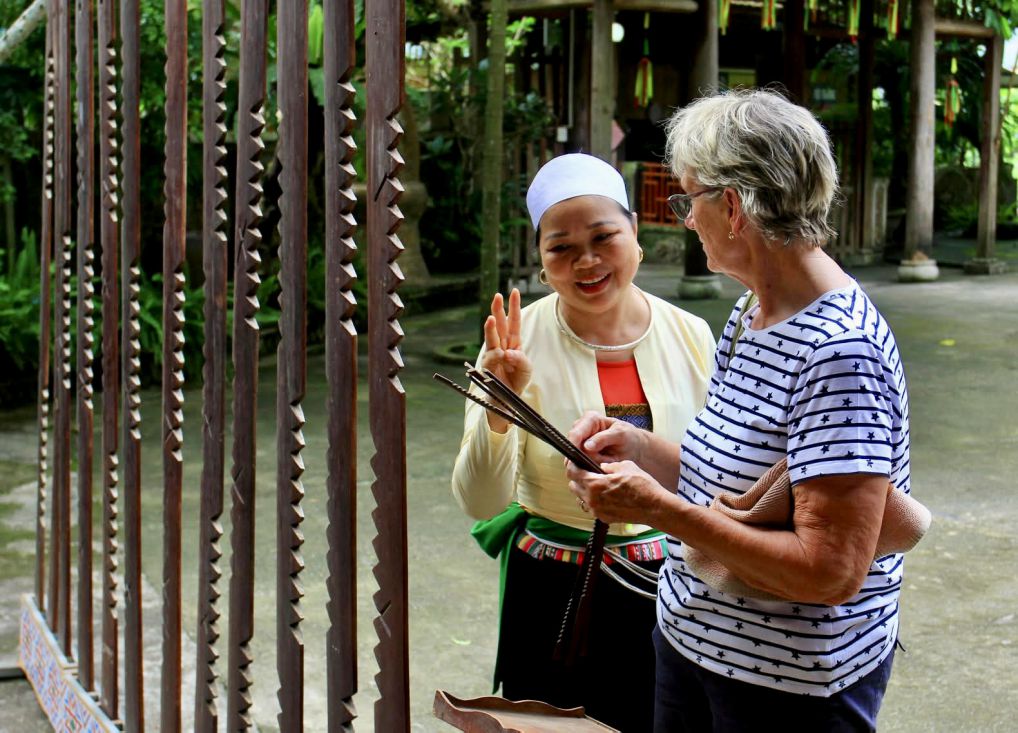
Connecting the community, creating livelihoods
Thanks to its open space and philosophy of serving the community, the museum welcomes 5,000 - 7,000 visitors each year, mostly students, researchers, and international visitors. In particular, visitors enter for free, only if they want to contribute. I opened this place so that the Muong people have a place to remember, and strangers have a place to understand, Mr. Binh shared.
Not only stopping at exhibition, the museum also connects with the community through hands-on experiences: Grinding rice, weaving fabric, cooking rice, listening to gongs, learning to sing folk songs... Even the dishes served here are sung by Muong people. This model not only preserves cultural life but also creates jobs and increases income for local people.
According to Mr. Ta Ngoc Doanh - Vice Chairman of Thong Nhat Ward People's Committee, Phu Tho Province, Muong Cultural Heritage Museum is not only a tourist destination, but also a place to educate traditions for the younger generation. This place is like a "red address" to promote the local image, while contributing to preserving and promoting the cultural identity of the Muong ethnic group in Hoa Binh (old).
Muong Cultural Heritage Museum is not only a place to preserve artifacts, but also a persistent journey to preserve the culture of our ancestors. In the resounding gong sound in the middle of the street, the love of the Muong people for the identity of their nation is still intact, so that those values are not only in memories, but vivid in every rhythm of life today.


